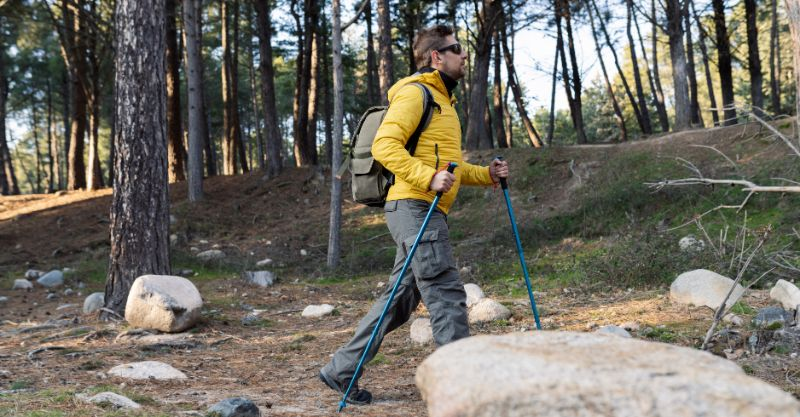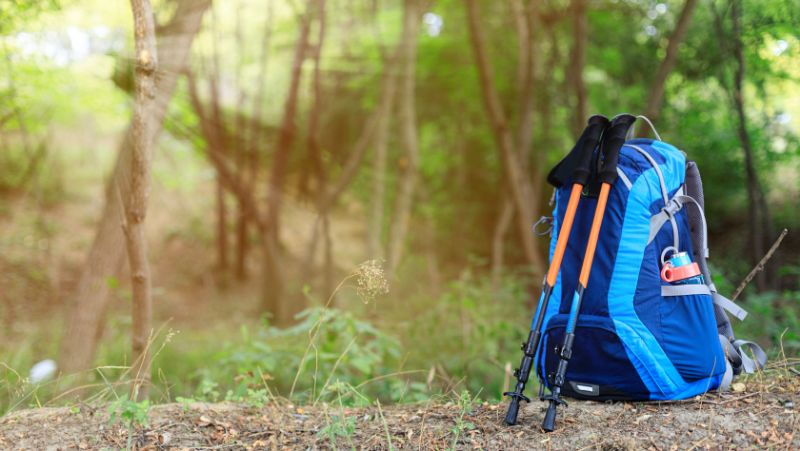When it comes to hiking, having the right equipment can make all the difference. One essential tool that often goes overlooked is hiking poles. These simple yet effective devices can greatly enhance your hiking experience, providing stability, support, and numerous other benefits. In this comprehensive guide, we will explore everything you need to know about hiking poles, including their types, benefits, when to use them, and how to choose the right ones.

Introduction
Before we delve into the details, let's highlight the significance of proper hiking equipment. Whether you're a novice hiker or a seasoned outdoor enthusiast, having the right gear is essential for a safe and enjoyable adventure. Among the various hiking tools available, hiking poles stand out as versatile and valuable companions.
Different Types of Hiking Poles

Hiking poles come in different types, each offering unique features and advantages. The most common distinction is between adjustable and fixed-length poles. Adjustable poles allow you to customize the height according to your preference and the terrain. Additionally, hiking poles are made from various materials, such as aluminum, carbon fiber, or a combination of both. Grip and strap options also vary, offering different levels of comfort and control.
Benefits of Using Hiking Poles
The benefits of using hiking poles are numerous, making them an invaluable addition to any hiker's toolkit. Here are some advantages you can expect when utilizing hiking poles:
- Improved stability and balance: Hiking poles provide extra points of contact with the ground, enhancing your stability and balance, particularly on uneven or challenging terrain.
- Reduced impact on joints: By transferring some of the weight from your legs to your upper body, hiking poles can help alleviate stress on your joints, especially during descents.
- Increased endurance and efficiency: Hiking poles engage your upper body muscles, effectively distributing the workload and reducing fatigue. This allows you to hike longer distances with less effort.
- Enhanced safety on challenging terrain: When traversing steep slopes, slippery surfaces, or crossing rivers or snowfields, hiking poles offer added stability and can prevent slips and falls.
Situations Where Hiking Poles Are Most Useful
Hiking poles provide numerous benefits in various hiking situations, making them an essential tool for outdoor enthusiasts. They offer increased stability and balance, especially on uneven terrain or steep inclines. By distributing weight evenly, hiking poles help reduce strain on the knees and joints, allowing for a more comfortable and enjoyable hiking experience. Additionally, they can assist in navigating tricky sections, such as river crossings or slippery surfaces, providing an added layer of safety. So, whether you're embarking on a challenging mountain trail or a leisurely hike through the woods, considering the utilization of hiking poles can greatly enhance your outdoor adventures.
- Uphill climbs: Hiking poles provide extra support when ascending steep inclines, helping you maintain balance and reduce the strain on your legs.
- Descents and steep slopes: When descending, hiking poles act as anchors, absorbing the impact and reducing stress on your knees and joints.
- Uneven and slippery surfaces: Hiking poles offer stability on rocky or uneven terrains, preventing slips and falls.
- River crossings and snow trekking: Hiking poles aid in maintaining balance and gauging the depth of water or snow, ensuring safe passage.
When Not to Use Hiking Poles
While hiking poles are incredibly beneficial, there are situations where they may not be necessary. Consider leaving your hiking poles behind in the following circumstances:
- Well-maintained trails: If you're hiking on well-marked and maintained trails with relatively flat terrain, you may find that hiking poles are not essential. The even surfaces and clear paths provide enough stability and balance without the need for additional support.
- Shorter hikes: For shorter hikes that don't involve steep ascents or descents, you might choose to forgo the hiking poles. The shorter duration and less challenging terrain may not require the extra assistance provided by the poles.
- Light backpack: If you're carrying a light backpack with minimal weight, you may not feel the need for hiking poles. The reduced load on your back and joints can make the use of poles less necessary.
- Familiar routes: If you're hiking on familiar routes that you've previously hiked without poles, you may feel comfortable leaving them behind. Knowing the terrain and being aware of any challenging sections can help you make an informed decision.
Remember, the decision to bring or leave behind hiking poles ultimately depends on personal preference and the specific conditions of each hike.
How to Choose the Right Hiking Poles
When it comes to choosing the right hiking poles, there are several factors to consider. Firstly, think about your personal preferences. Do you prefer a lightweight option for easier maneuverability, or do you prioritize durability for more rugged terrains? Additionally, consider your specific hiking needs. Will you be tackling steep inclines or uneven surfaces? Adjustable poles can provide versatility in adapting to different terrain types. Furthermore, take into account the grip and handle designs that offer comfort and stability during long hikes. By carefully considering these factors, you'll be able to select the perfect hiking poles to enhance your outdoor adventures.
- Length and weight: Opt for hiking poles that can be adjusted to a suitable length based on your height and the terrain you'll be tackling. Consider the weight of the poles as well, ensuring they're comfortable to carry.
- Grip and strap preferences: Test different grips to find one that feels comfortable in your hands. Additionally, choose straps that are adjustable and provide proper support.
- Durability and price range: Consider the durability of the hiking poles, especially if you frequently embark on challenging hikes. Balance the quality and features with your budgetary constraints.
Conclusion
Hiking poles can elevate your outdoor experience, offering stability, support, and numerous other advantages. By using hiking poles correctly, you can enhance your endurance, reduce strain on your joints, and navigate challenging terrains more safely. Remember to choose hiking poles that suit your preferences and needs. So, before your next hiking adventure, consider adding hiking poles to your gear, and prepare to conquer the trails with confidence!
Our Free Tools
Discover the power of our free tools and calculators to supercharge your health routine!

